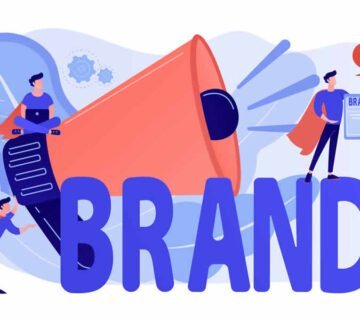What is the difference between SEO and ranking factors and which factors on a website are most important for optimisation?
What are the 5 most important SEO factors of website?
What SEO factors are the most important for ranking on Google? There are anywhere from three basic to hundreds of these factors.
Not everything done for SEO is about ranking.
The difference between SEO and ranking factors can be existential, but it’s important to know that SEO is much more than just achieving success in Google.
SEO, moreover, also means optimising for user-friendliness.
Here are five most important SEO factors, and tips on how to make the most of them.
Something will increase your ranking; something will improve your UX, increase conversion rates, improve your brand recognition, etc.
Each of these should be part of your overall SEO strategy.
1. Website content
Content is always a good thing. But content alone won’t be enough to boost your site’s ranking for the keywords it’s actually targeting.
Truth be told, 9/10 of online content doesn’t generate traffic from Google at all. What do search engines value content creation for?
For the relevance of content to the user’s intent, i.e. what the user is looking for.
Understanding what the user is looking for is the future of search engines.
Google’s algorithms are constantly working to understand search syntax and semantics.
In other words, the relevance of content to a user’s intent is the most important ranking factor, because if your content is not relevant to search, it will be useless to you.
What to optimise
- Determine the purpose of your keywords
- analyze the search results for those keywords and see what kind of content ranks better
- determine the semantic similarity with those keywords and optimise your content to those parameters.
Long content
Search engines prefer long content for many user information queries.
According to researches, content that contains between 2,200 and 2,500 words tends to get the most organic traffic.
How to optimise
- Examine the pages with the highest rankings for your target keyword and analyse their content.
- Add semantically related keywords to supplement the content with additional topics.
- Answer any questions users may have about the topic.
Organized content
SEO meta tags still play an important role in content creation, despite the rise of semantic analysis.
Optimising title tags and heading tags can help in the following cases:
- Advise the intent and syntax of your web page document.
- Organize your document to make it easier for users and search engines to read.
- Making pages more crawlable.
- Help your page pass the 5-second rule. (5 seconds to motivate potential customers to take a useful action on the site, or at least stay there).
How to optimise
- Insert your targeted keywords into the title tags, URLs and page titles.
- Create header sections (H2, H3, H4) using relevant keywords in them
2. User Engagement
Websites exist for both people and search engines. When developing a website, it is useful to look at your site and its content in terms of how interesting the content is and am I bored with my site yet?
User engagement or signals are believed to be a factor in Google’s rankings, even if only indirectly.
Nevertheless, such signals can be a good indicator of the improvements you need to make to your site.
Page views per session
The number of page views per session is an indication of how many pages a user views before leaving your site.
This number, as well as the average session duration (the amount of time a user spends on your site), is easily found in Google Analytics.
The number of page views illustrates to you how interactive and interesting your site is in terms of navigation. Analyzing this factor, as well as the user behavior factor, can help you understand what’s preventing your sales and hindering leads in general.
It also shows how interesting your blog or news is. Usually, if a user views multiple content/articles in a single session on a website, it means you are going in the right way.
Optimisation tips
- Analyze pages with high bounce rate and look for opportunities to increase session duration or increase the number of pages views per session.
- Insert Call-to-action to encourage conversions.
- Provide additional ways to navigate your content, e.g. include links within body text or links to relevant reading content (“you’ll also be interested in this”, etc.)
Bounce rate
The bounce rate is not a ranking factor, and it may be positive or negative.
A bounce rate illustrates how satisfied users are with your page or site.
A high bounce rate can indicate that your pages are not appealing to users, especially for online shopping sites.
Bounce rates, on the other hand, might indicate that users are getting the answer they’re looking for (weather sites, for example).
Optimisation tips
- “Catch” the user – tell a tale) or story
- Avoid intrusive ads and pop-up ads.
- Make sure the landing page is relevant to the right search queries.
Click-through-rate (CTR)
The appearance of your website in search engine results is the first interaction a user has with your site. CTR is an indicator of a successful click-through-rate (the ratio of the number of your page impressions in search results for a particular keyword phrase to the number of times your link is clicked).
A low CTR may indicate that your site’s link is not relevant to your users’ search engine. It also indicates that your meta description or title tag is probably not convincing.
Optimisation tips
- Insert keywords with exact relevance in your title tags and meta description, so they are in bold.
- Add the benefit of clicking on this page (e.g. “free shipping / discount until tonight %today_date%”, etc.) to your meta description.
- Make sure your tags are the correct length and not cropped.
3. Technical structure
How the technical structure of a website affects UI and keyword ranking.
Technical SEO can be considered as the foundation of SEO on which everything else is built. Without proper technical optimization, all other website optimization efforts are practically useless.
Crawlability
In order for your site to get into the index, it must be crawled. Search engine crawlers have access only to the links listed in your sitemap and accessible from your home page.
Care should be taken to ensure that our website is accessible to crawlers and optimized for crawling.
It is important how many pages the search engines will crawl during a crawl session. This is determined by your crawl speed and your need to crawl.
Crawl speed is a measure of how many queries per second a search engine spider makes to your site, while crawl demand determines how often search engine spiders will crawl your site (depending on how popular it is).
The vast majority of webmasters also don’t bother with crawl priority, especially for larger sites. Crawl priority allows webmasters to prioritise which pages should be crawled and indexed first.
Optimisation tips
- Create a sitemap with your CMS or Screaming Frog and submit it manually through Google Search Console and Bing Webmaster Tools.
- Block all the pages you don’t want crawled or indexed by placing them in the ban file of your robots.txt file.
- Check redirects and set parameters for dynamic URLs.
Security
Having a secure HTTPS protocol in place is valuable for securing transactions on your site. It’s also part of the Page Experience ranking factors for Google.
The number one technical error found on websites is links to mixed content or HTTP pages. This can happen during SSL migration and for a variety of other reasons.
All pages should in theory be redirected to their HTTPS variants, and it is not practical to have links to mixed content at all. In addition, such links (to mixed content) do not always redirect to their HTTPS counterpart.
How to optimise
- Contact your hosting provider if there are any problems with SSL certification and implementation.
- Run a scan of your website with Screaming Frog to detect mixed content errors.
- Place links to sitemaps in the robots.txt file.
- Rewrite your .htaccess file to redirect all website traffic to URLs with HTTPS.
Clean URLs
It is important that your content does NOT contain links to non-working or redirected pages. Not only can this affect speed, but it can also slow down indexing and crawling.
Problems with the status code (4xx, 5xx) can appear naturally over time or due to site migration.
You need clean URL structures with status codes of 200.
Optimisation tips
- Run a scan of your website with Screaming Frog to detect status codes 4xx and 5xx.
- Use 301 redirects on broken pages to direct users to a more relevant page.
- Implement customizable 404 pages with accessible URLs to redirect traffic to relevant pages.
- Contact your web hosting provider about any 5xx errors affecting URLs.
4. Internal links (interlinking)
Interlinking is important from several SEO perspectives:
- Crawlability
- UX and IA
- Content
- Link building
If technical SEO is the backbone of a website, internal links are the moves that get you across pages.
As sites grow and companies change, maintaining consistency across the entire site and internal linking structure can be difficult.
Deep links
Deep linking has been a SEO best practice since the beginning of the Internet.
The idea is to link to lost pages on your site from a higher level category page, in order to transfer authority from one page to another, and to ensure that the page will be indexed.
Creating an organized internal link structure for similar topics allows the bottom pages of your site to gain some authority from the higher authority pages.
It also provides users with additional actions on your site, such as reading more information on a particular topic or navigating to another section of your site.
Optimisation tips
- Conduct crawls to identify lost pages that are not indexed.
- Strategically use links in your content to convey authority and provide additional reading content (minimum 2 per post).
Organized website hierarchy
All websites consist of a hierarchy of topics that is designed to communicate to users and search engines the purpose of each section of the site.
On any proper website, you’ll see that the top navigation menu is designed to create a topic tree.
Tags are also made to help organize content, and to help readers understand the context.
The hierarchy should be top-down, allowing search engines to crawl and index specific pages in segments or clusters.
Optimisation tips
- Analyze what customers are looking for in relation to your topic.
- Use keywords to optimize category pages and semantically related keywords for subcategory pages.
- Add breadcrumbs or links in the footer, so users can return to a specific page.
5. Mobile Optimisation
In the mobile-first era, it’s essential that your website is mobile-friendly. Mobile-first has become a major ranking factor for Google, and it also updates faster than the index for computers.
When designing a website, it’s important to keep in mind the size of the mobile devices themselves for mobile use. It is also important not to forget the peculiarities of surfing on mobile devices.
For example, long scrolling is preferable to links that cause users to load another page and make browsing more difficult.
The two most important mobile-friendly factors are mobile-friendly design and high page load speeds.
Optimisation tips
- Implement an adaptive web design.
- Mark the pages with AMP code using your CMS.
- Increase page load speed by minimizing website resources.
Finalising with the main factors of SEO:
It’s likely that there are more or soon to come other important elements of website SEO, but the above may well form the basis for a ‘proper’ website.
SEO is a constantly evolving and organic industry, with ever-changing algorithms or actions.





No comments